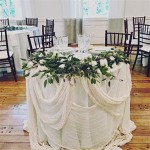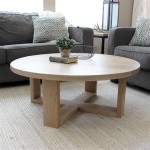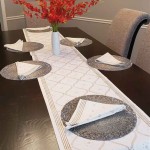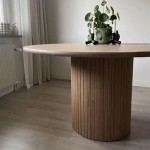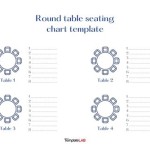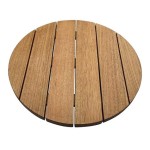Everything You Need To Know About Metal Table Bases for Round Tables
Metal table bases are a crucial component in furniture design, particularly when it comes to round tables. They provide the necessary support, stability, and aesthetic appeal that determine the overall functionality and visual impact of the table. Choosing the right metal table base for a round table involves considering several factors, including the size and weight of the tabletop, the intended use of the table, the desired style, and the durability requirements. This article will delve into the various aspects of metal table bases for round tables, offering a comprehensive guide to assist in making informed decisions.
The construction material significantly impacts the strength and appearance of the metal table base. Steel, stainless steel, and cast iron are commonly employed, each offering unique advantages. Steel is generally the most cost-effective option, providing good strength and weldability. Stainless steel offers superior corrosion resistance, making it ideal for outdoor or high-moisture environments. Cast iron, while heavier, offers a classic, robust aesthetic and excellent stability. The specific alloy and manufacturing processes also play a role in the base's overall quality and longevity.
Beyond the material, the finish applied to the metal base also contributes to its durability and visual appeal. Powder coating, painting, and plating are common finishing options. Powder coating provides a durable, scratch-resistant finish that is available in a wide range of colors. Painting offers flexibility in color selection but may be less durable than powder coating. Plating, such as chrome or brushed nickel, provides a sleek, metallic aesthetic and good corrosion resistance. The choice of finish should align with the intended use and overall design aesthetic of the table.
Key Point 1: Selecting the Right Size and Style of Metal Table Base
Determining the appropriate size for a metal table base for a round tabletop is a crucial first step. The base must be adequately sized to support the weight of the tabletop and prevent wobbling or tipping. A general rule of thumb is that the base should have a diameter or width that is at least 40-50% of the diameter of the tabletop. For larger or heavier tabletops, a larger base is necessary to ensure stability.
The height of the table base is another critical consideration. Standard dining tables typically have a height of 28-30 inches, while bar-height tables range from 40-42 inches. Counter-height tables fall in between, at 34-36 inches. The base height should be selected to achieve the desired overall table height, taking into account the thickness of the tabletop. Incorrect height can make the table uncomfortable for use.
Style is also a paramount consideration. Metal table bases come in a wide array of styles, ranging from minimalist and modern to industrial and ornate. A simple, clean-lined base can complement a contemporary tabletop, while a more decorative base can add character to a traditional or rustic design. Common styles include pedestal bases, four-leg bases, and X-bases. Each style offers different pros and cons in terms of stability, space utilization, and aesthetic appeal.
Pedestal bases, characterized by a central column or post, offer a clean, unobstructed look and provide ample legroom. They are particularly well-suited for smaller round tables. Four-leg bases provide excellent stability and are suitable for larger round tables. X-bases offer a unique, visually appealing design but may compromise legroom slightly. The choice of style ultimately depends on the desired aesthetic and functional requirements of the table.
Another aspect of style is the shape of the base elements. Round tubing, square tubing, and flat steel are commonly used in metal table base construction. Round tubing offers a softer, more organic look, while square tubing provides a more modern, angular aesthetic. Flat steel can be used to create a variety of designs, from minimalist and geometric to more intricate and decorative.
The overall design of the metal table base should complement the style of the tabletop and the surrounding environment. A cohesive design aesthetic creates a more visually appealing and harmonious space. Carefully considering the size, style, and shape of the base ensures that it effectively supports the tabletop and contributes to the overall design aesthetic of the table.
Key Point 2: Understanding Different Types of Metal Table Bases
Beyond the general styles mentioned earlier, there exist more specific types of metal table bases designed for round tables. These include spider bases, disc bases, and trumpet bases, each offering distinct features and benefits.
Spider bases consist of multiple arms or "legs" that radiate outwards from a central hub. They are typically used with larger round tabletops to provide enhanced stability and weight distribution. The number of arms and the design of the hub can vary, allowing for customization to suit different aesthetic preferences and load-bearing requirements. Spider bases are often used in commercial settings where durability and stability are paramount.
Disc bases feature a flat, circular plate at the bottom, providing a stable and even distribution of weight. They are often used with smaller round tables and are particularly well-suited for environments where space is limited. Disc bases can be made from steel, stainless steel, or cast iron, and can be finished in a variety of colors and textures. They offer a clean, minimalist look and are easy to clean and maintain.
Trumpet bases are characterized by a flared, conical shape that resembles a trumpet. They offer a unique, visually appealing design and provide good stability. Trumpet bases are often used in upscale restaurants and bars to create a sophisticated and elegant ambiance. They can be made from a variety of metals and can be customized with different finishes and decorative elements. The wider base provides enhanced stability compared to some other pedestal base options.
Adjustable height table bases represent another category. These bases allow for easy adjustment of the table height, making them versatile for different uses. Adjustable height bases are particularly useful in collaborative workspaces or home offices where users may prefer to sit or stand while working. They typically feature a motorized or manual mechanism for adjusting the height, and can be programmed with preset height settings for added convenience.
Folding table bases are designed to be easily folded and stored away when not in use. They are ideal for temporary setups or spaces where flexibility is required. Folding table bases are commonly used in catering, events, and training rooms. They are typically made from lightweight materials and feature a simple folding mechanism for easy operation. Despite their portability, they should provide adequate stability when in use.
Choosing the right type of metal table base depends on the specific application and the desired features. Consider the size and weight of the tabletop, the intended use of the table, the available space, and the desired aesthetic. Understanding the different types of metal table bases allows for selecting the optimal solution for any round table application.
Key Point 3: Evaluating Durability, Maintenance, and Cost
Durability is a crucial factor to consider when selecting a metal table base, especially for commercial applications or high-traffic areas. The material, construction, and finish of the base all contribute to its overall durability and longevity. Stainless steel offers the best corrosion resistance, while powder-coated steel provides good scratch resistance. Cast iron, although heavy, is extremely durable and can withstand significant wear and tear.
The welding quality and joint construction are also important indicators of durability. Welds should be strong and clean, without any signs of porosity or cracking. Joints should be securely fastened and reinforced to prevent loosening or failure over time. A well-constructed metal table base will provide years of reliable service.
Maintenance requirements should also be considered. Metal table bases are generally easy to clean and maintain. Regular wiping with a damp cloth is usually sufficient to remove dirt and grime. For stainless steel, a stainless steel cleaner can be used to remove fingerprints and water spots. Powder-coated surfaces can be cleaned with mild soap and water. Avoid using abrasive cleaners or harsh chemicals, as these can damage the finish. Proper maintenance will help to preserve the appearance and prolong the lifespan of the metal table base.
The cost of a metal table base can vary significantly depending on the material, size, style, and finish. Steel bases are generally the most cost-effective option, while stainless steel and cast iron bases tend to be more expensive. Custom designs and specialty finishes will also increase the cost. Set a budget before starting the selection process and compare prices from different suppliers to find the best value.
Consider the long-term cost of ownership when evaluating different options. While a cheaper base may seem appealing initially, it may not be as durable or aesthetically pleasing as a more expensive option. Investing in a high-quality metal table base can save money in the long run by reducing the need for repairs or replacements. Also, consider the potential impact on customer experience. A wobbly or unstable table can be a significant source of dissatisfaction in a restaurant or bar setting.
Warranties and guarantees can provide additional peace of mind. Many manufacturers offer warranties on their metal table bases, covering defects in materials and workmanship. Review the terms and conditions of the warranty carefully before making a purchase. A comprehensive warranty demonstrates the manufacturer's confidence in the quality of their product. Taking into account durability, maintenance, cost, and warranty information ensures a smart and practical metal table base selection.

Modern Metal Table Base For Square Or Round Top Dining Spider Steel

Round Black Powder Coated Cast Iron Steel Table Base

Table Base 213 Wishbone 28h For Round Dining Tabletop Flowyline

Round Metal Dining Table Base For 72 Tables 28 H X 48 R Tu

Industrial Style Table Base Dining Leg For Round Top Steel Kitchen

Table Base 213 Wishbone 28h For Round Dining Tabletop Flowyline

Table Base 21 X 22 H28 Desk Legs Steel For Round Living Dining Room 311 Lithe Flowyline

Round Metal Dining Table Base For 72 Tables 28 H X 48 R Tu

Table Base 325 Filar 28h Diy Metal Legs Furniture Flowyline

Table Base 323 Tulipe 28h For Round Tabletop Flowyline Design
Related Posts

